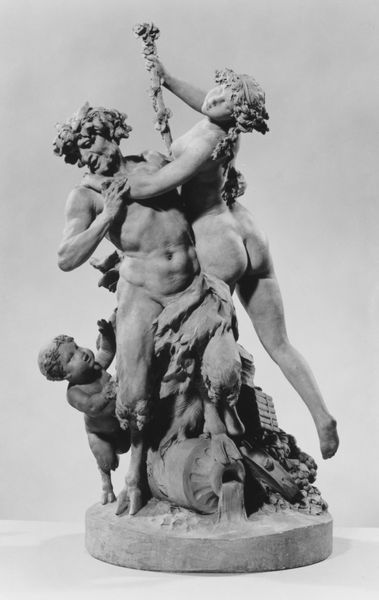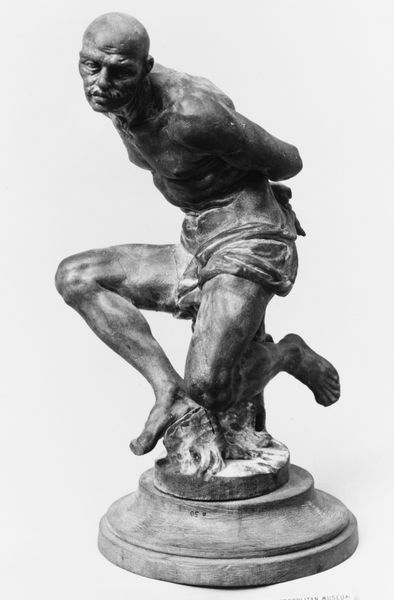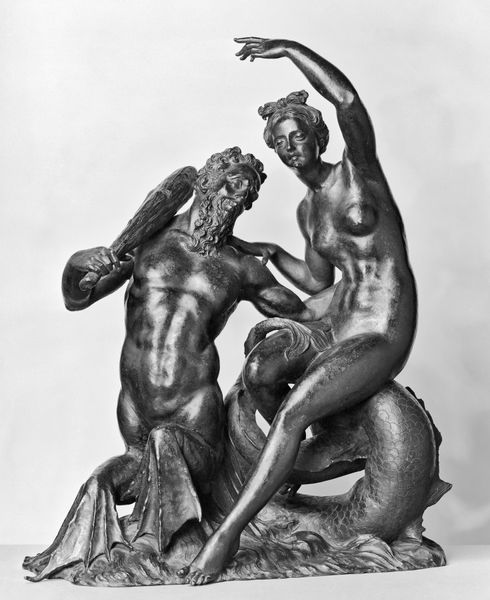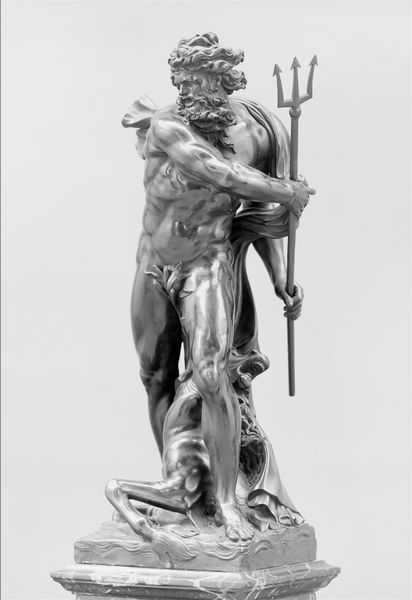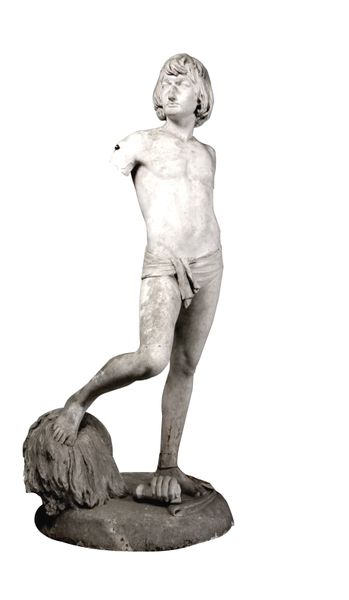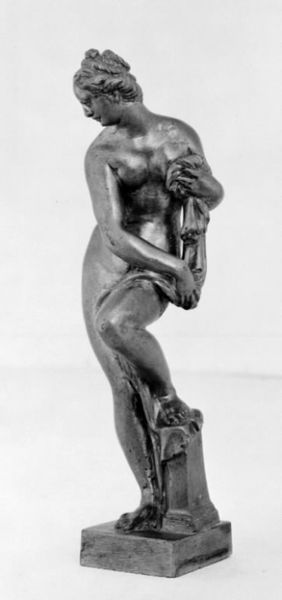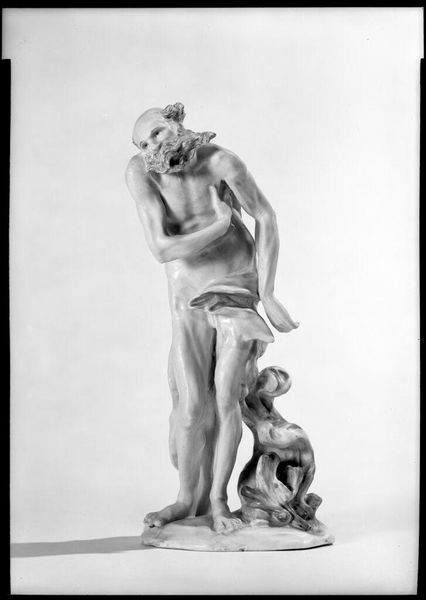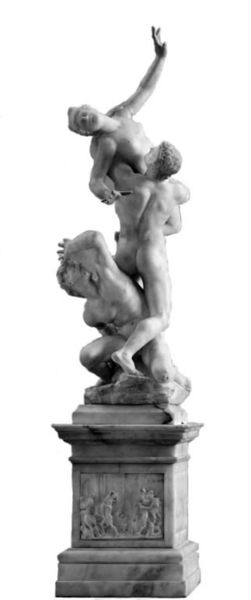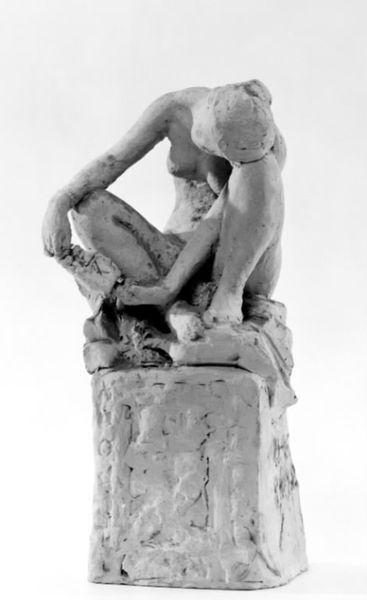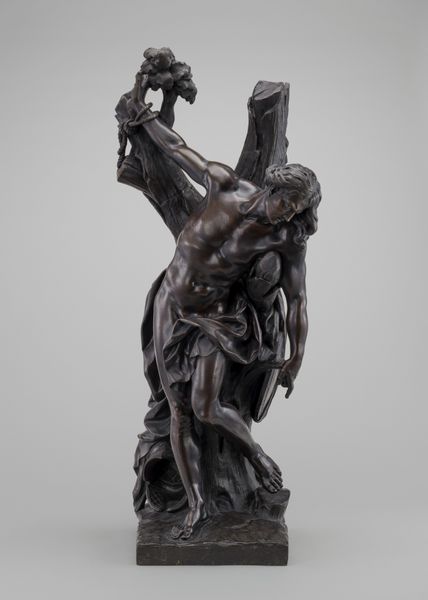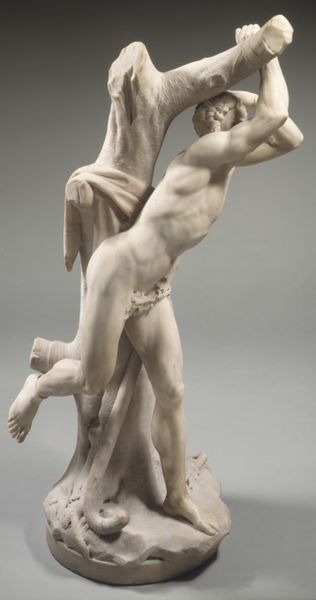
bronze, sculpture
#
allegory
#
sculpture
#
bronze
#
mannerism
#
figuration
#
sculpture
#
history-painting
#
decorative-art
Dimensions: Height: 35 1/2 in. (90.2 cm)
Copyright: Public Domain
Giambologna, a Flemish sculptor working in Italy, made this dynamic terracotta sculpture, Hercules and Antaeus. The tale of Hercules and Antaeus is a story about power, dependence, and the conquering of the 'other'. Antaeus, a giant, was invincible as long as he maintained contact with his mother, the earth. Hercules, recognizing this, lifts him into the air, breaking his connection and crushing him to death. Giambologna captures the emotional and physical struggle between the two figures. Hercules's grim determination contrasts with Antaeus's desperate struggle, his face contorted in pain and defeat. During the Renaissance, classical mythology was often used to legitimize the power of the ruling elite. Hercules, the ultimate symbol of strength and heroism, became a popular figure in art and literature, embodying the ideals of courage, virtue, and might. But what does it mean to celebrate a hero who defeats his opponent by severing his connection to the earth, to his source of power and identity? How does this narrative resonate with histories of colonialism, displacement, and the suppression of indigenous cultures? Consider the violence inherent in this image, and how it reflects the societal structures and power dynamics of its time.
Comments
No comments
Be the first to comment and join the conversation on the ultimate creative platform.
